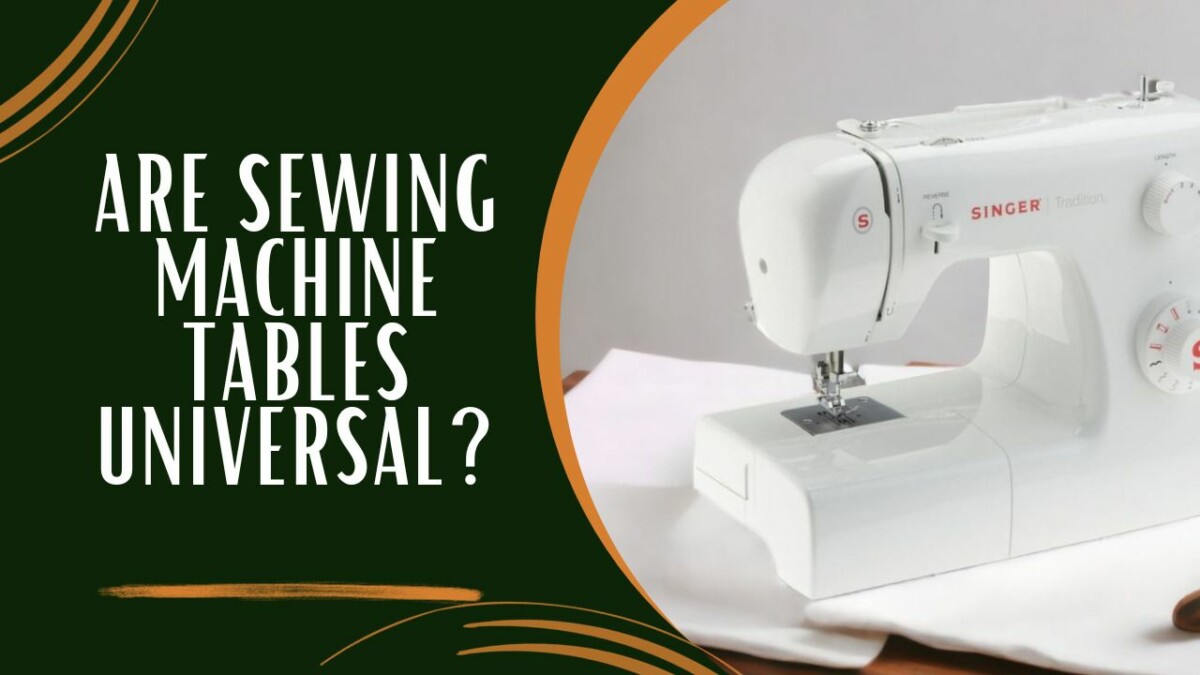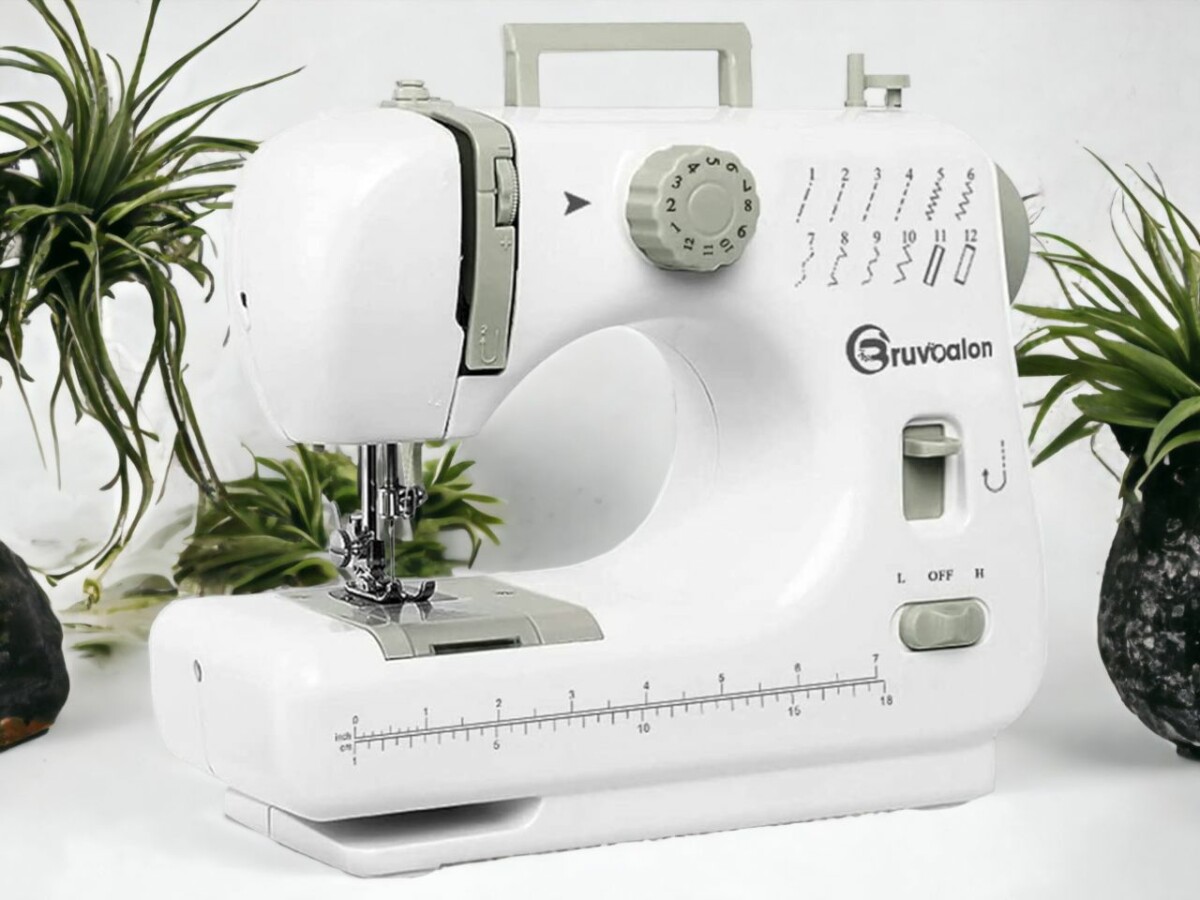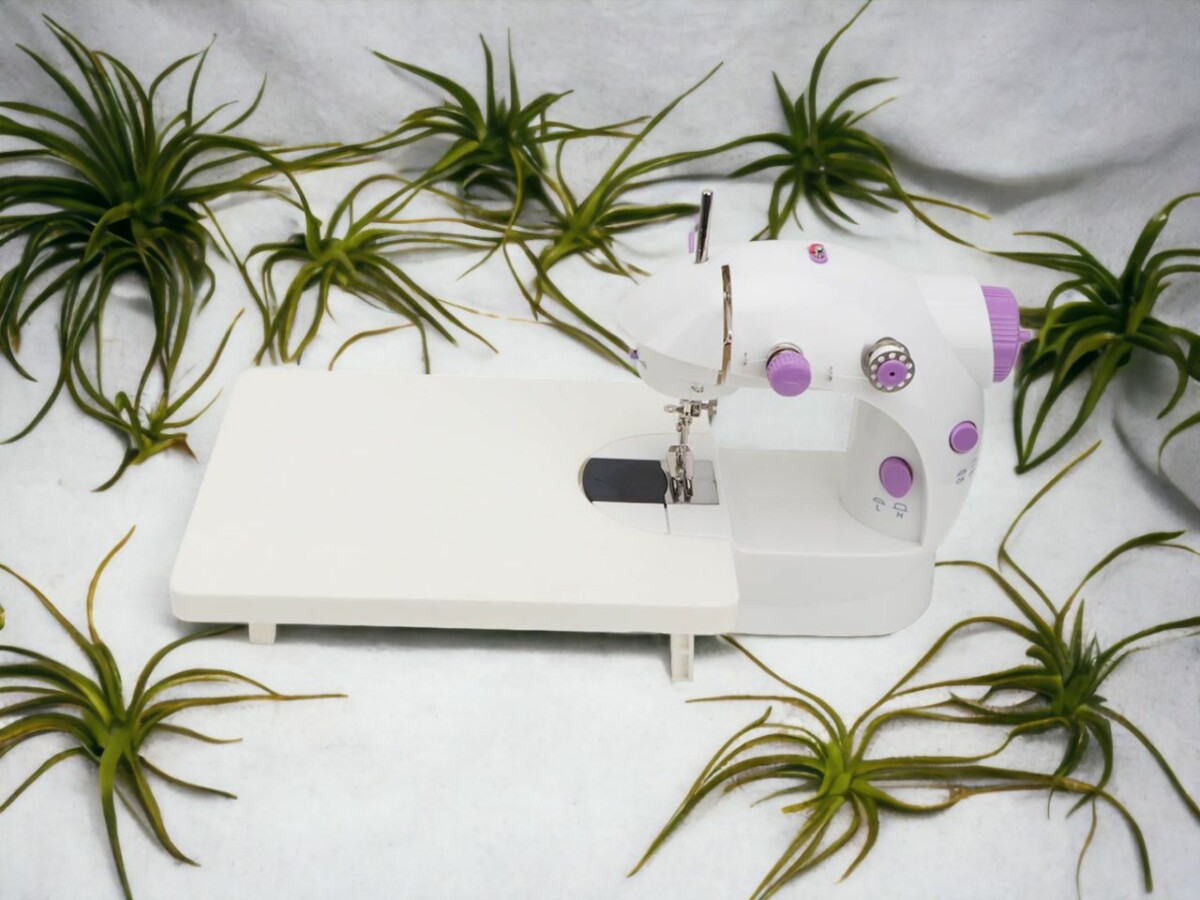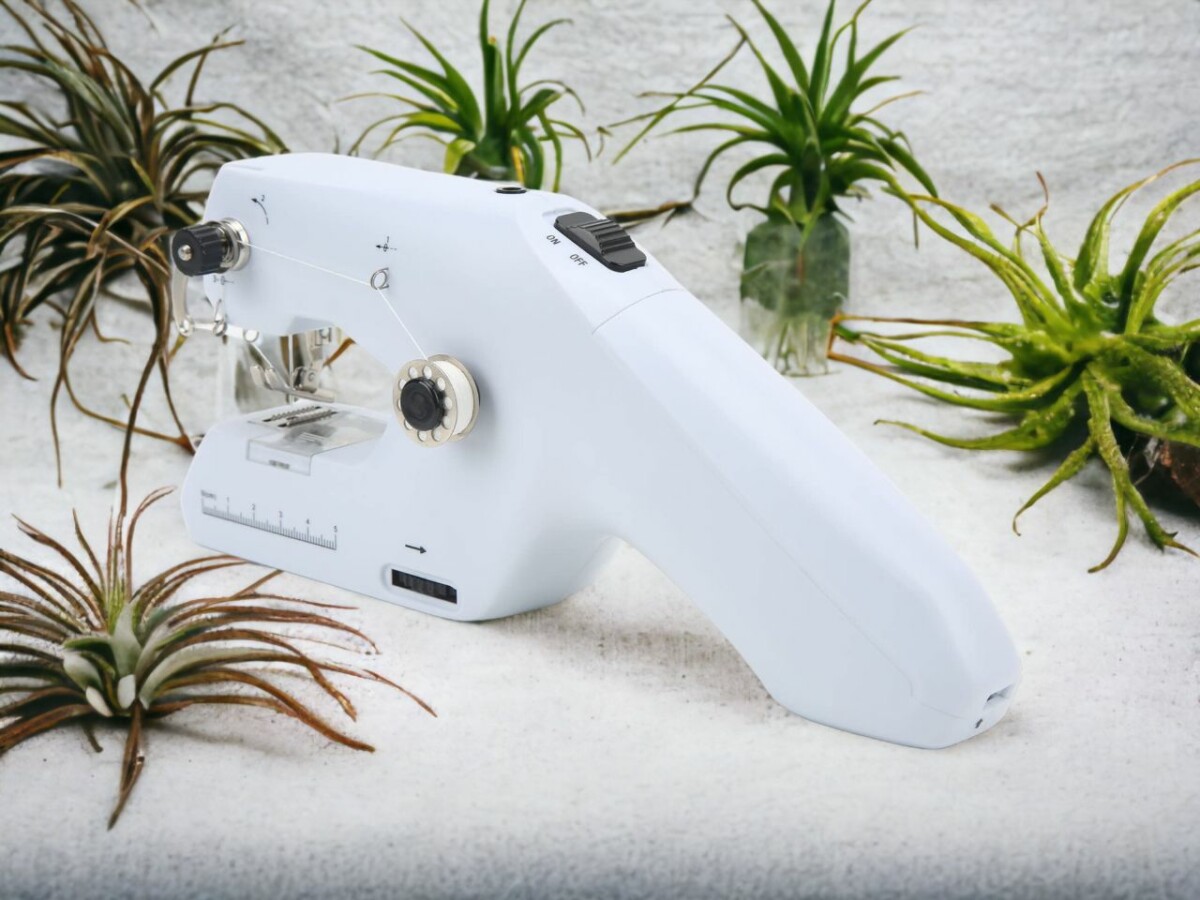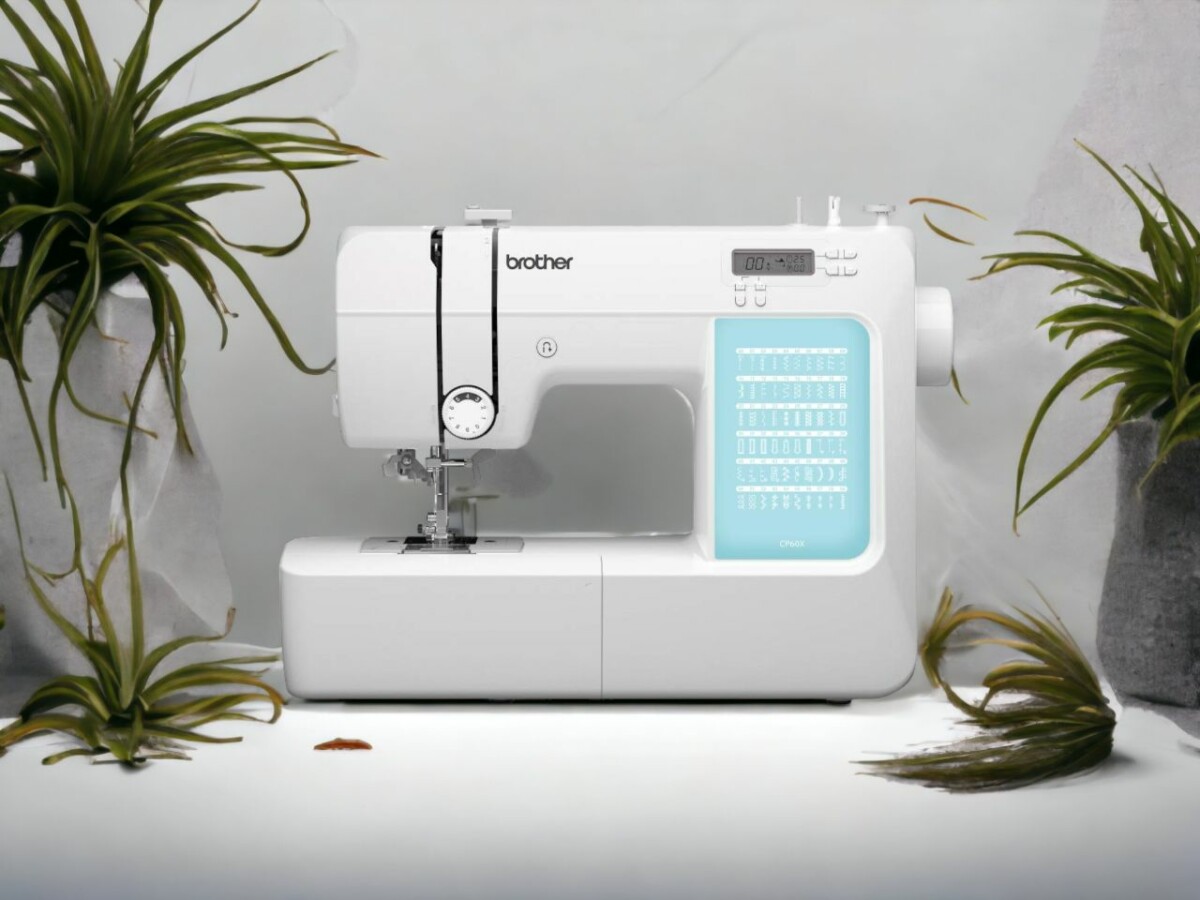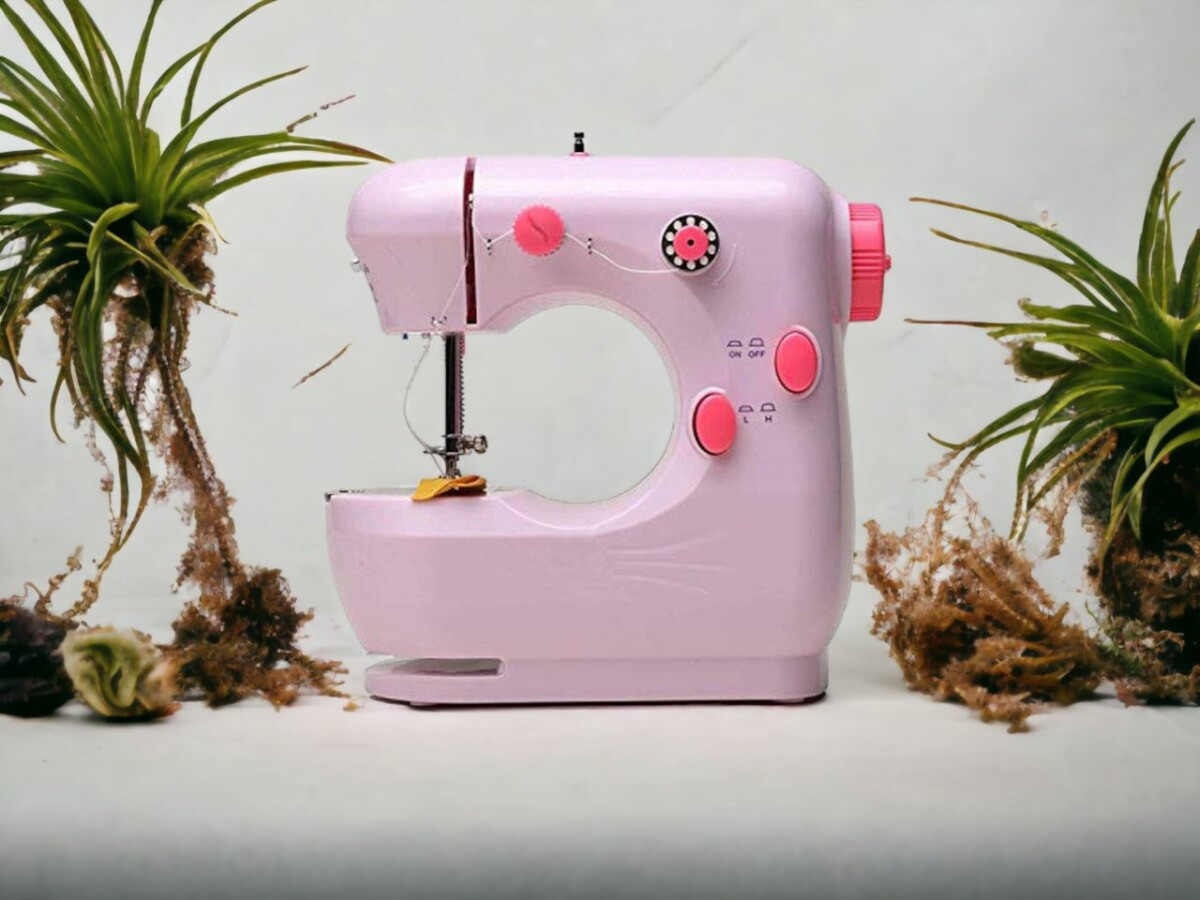Ever found yourself thinking, ‘Hey, are sewing machine tables actually universal?’ Well, you’re not alone. If you’re a newbie to the sewing world or a veteran quilter, having the right table can totally revolutionize your sewing game.
This piece is all about unraveling the compatibility between various tables and machines, looking into the pros, cons, and all the things you should keep in mind. By the end of it, you’ll be all set with what you need to know to create your dream sewing setup.
So, let’s dive right in and stitch together the answers you’ve been looking for!
Are Sewing Machine Tables a One-Size-Fits-All Deal?
No, sewing machine tables aren’t universally fitted. When picking out a sewing machine table, ensure that it accommodates your machine model. Look out for tables that come with adjustable platforms or inserts to fit a wider range of machines.
Listen up, a sewing machine table isn’t just another piece of furniture you buy to fill up your room, it’s a game-changer that can seriously level up your sewing game. When you’re weighing up how much you want to spend on one, think about how much sewing you’re actually going to do. Choose wisely, and your table will give you not just space, but also stability and functionality.
When you’re scouting for the right fit, you’ll see there’s a whole bunch of different types of sewing machine tables out there. Some come with extra storage, others have adjustable parts to make them more comfy. Sure, a budget-friendly table might sound like a great deal, but if it’s all wobbly or doesn’t have enough room, it could mess up your sewing.
On the other hand, most of the pricier options are built to last, have ample space, and are designed with your comfort in mind. So, don’t just get swayed by the price tag. It’s all about getting something that’s good quality and fits your needs. Trust me, the right table can make your sewing sessions feel less like work and more like playtime.
The Characteristics of Universal Sewing Machine Tables
When you’re on the hunt for a sewing machine table, you’ll quickly spot the universal one because it’s a total champ. It’s not just about how tough it is, but also how it can play nice with all sorts of machines – like a true team player. This table is the perfect example of why people rave about universal sewing machine tables.
One of the best things about it? It’s got a lot of space for you to work on – like, a lot. And you can tweak it to your heart’s content. Adjust the height, switch up the angles – it’s all about making sure you’re not pulling a muscle while you’re working on your masterpiece.
Oh, and it’s got storage built right into it. So, all your sewing goodies are always within arm’s reach – no need to play hide and seek with your threads and needles.
That said, it’s not your only option. If you’re tight on space or a bit strapped for cash, you could start off with a table or desk you already own. You can totally customize your sewing space to suit your needs, making it as one-of-a-kind as your projects.
The Relationship Between Sewing Machines and Tables
While it might initially seem like a sewing machine and its table are just two random items chilling independently, they’re actually a tight-knit pair. They work together to elevate your sewing game to the next level. The perfect dimensions for your sewing machine table can provide you with a comfy workspace while also extending your machine’s lifespan.
Yeah, you got it right! Using a sewing machine table comes with a heap of perks:
- It gifts you with a smooth, solid platform for your machine.
- It comfortably carries the weight of your machine, saving it from unnecessary wear and tear.
- You can tweak its height to match your comfort zone.
- It usually rocks built-in storage for all your sewing thingamabobs.
- It carves out a dedicated area for your sewing projects, helping you keep things neat and tidy.
Splurging on a decent table won’t only simplify your sewing process but also make it a thoroughly enjoyable ride.
Evaluating the Versatility of Sewing Machine Tables
Before we really dive into the nitty-gritty of sewing machine tables, we’ve gotta take a moment to appreciate just how versatile these bad boys can be. There’s a whole smorgasbord of options available out there, from those with all the bells and whistles that you can adjust to your heart’s content, to the rock solid ones that stay put no matter what.
Those adjustable tables? They’re the real MVPs. They give you the freedom to tweak the height, the angle, pretty much everything until you find that sweet spot that’s just right for you. On the flip side, fixed tables are your reliable workhorses. They won’t budge an inch, ensuring your machine stays steady as a rock when you’re working on those really detailed sewing projects.
But hey, while you’re weighing up the pros and cons of each type, don’t forget to consider how they’re going to affect your wallet. Sure, some sewing machine tables can have a pretty steep price tag, but there are also plenty of budget-friendly options out there that don’t skimp on quality or functionality.
At the end of the day, the table you go for should make your sewing projects a breeze, slot right into your workspace like a missing puzzle piece, and not leave your bank account crying out for mercy.
Choosing the Right Sewing Machine Table for Your Needs
On the hunt for that perfect sewing machine table? It’s no easy task, right? But hey, don’t stress. It’s all about finding that sweet spot that doesn’t burn a hole in your wallet while meeting all your specific requirements.
Now, adjustable tables? They’re a total game-changer. With them, you can tweak the height, angle, and basically personalize it to your comfort level. If your living space ain’t exactly a mansion, size and storage should be on your radar.
Here’s a quick checklist to get you sorted:
- Adjustable tables? Check them out. They’re all about catering to your comfort level.
- Got limited space? Make sure the table fits without cramping your style.
- Storage for all those threads, buttons, and whatnot? See if the table’s got room for those.
- Budget’s a biggie. Don’t let your dream table leave your wallet feeling light.
- And of course, don’t go for a wobbly table that can’t handle the weight of your sewing machine.
Just remember, the right table can take your sewing game to a whole new level. So, choose wisely and happy sewing!
Tips for Using Your Sewing Machine Without a Dedicated Table
Don’t sweat it if you don’t have a dedicated sewing table – there are plenty of other options to explore. The first thing on your to-do list should be to scout out a solid, temporary surface that can handle the weight of your machine.
Once you’re all set with that, next up on the agenda is to discuss how to take the edge off during those intense sewing sessions, and brainstorm some clever hacks to keep your supplies conveniently close.
Trust me, it’s all about making your sewing journey as smooth and stress-free as possible.
Selecting Appropriate Temporary Surface
Just because you don’t have a fancy sewing table doesn’t mean you can’t sew like a pro. All you need is the right temporary surface for your machine. It’s all about finding that perfect balance between space, efficiency, and cost. Yes, you heard me right, you don’t need a permanent table to get your creative juices flowing. There are plenty of space-savvy options out there.
Here’s the lowdown on picking the ideal surface:
- First things first, it’s gotta be sturdy enough to handle your machine. You don’t want it wobbling all over the place.
- It needs to be the right height for you. Trust me, your back will thank you after those marathon sewing sessions.
- It’s gotta have enough space for your fabric and other kit. You don’t want to be cramped.
- Steer clear of surfaces that vibe a lot. You don’t need that kind of negativity in your life.
- If you can, pick a spot near a power outlet. It’ll save you from the extension cord chaos.
In the end, remember that the right setup can turn your sewing ordeal into a smooth and enjoyable ride.
Reducing Strain and Fatigue
So, you don’t have a fancy sewing table, right? No worries at all, we can totally make this work. The main thing here isn’t to get all worn out or stressed out. Think ergonomics. Yeah, that’s right, even if your sewing station is just for the time being, make it as comfy and effective as possible.
Your chair and table height? They should be in that sweet spot where you’re not obsessing over your sewing project like the Hunchback of Notre Dame. An adjustable setup is the dream, but if not, just make sure it feels good, you know?
Your sewing machine should be right there, in your face, at a distance where you’re not doing some weird yoga pose just to reach it. A cushion for your lower back can be a real lifesaver by the way, so definitely get one of those.
And hey, don’t forget to take breaks, okay? Stretch a bit, let your eyes rest. Sewing shouldn’t be a marathon, it should be more like a Netflix series you enjoy episode by episode.
A relaxed posture is the way to go. Don’t let your shoulders or hands get all tensed up. Remember, the end goal here is to enjoy sewing, not to win an Olympic medal. So take your time to create a space that feels right and works well for you.
Organizing Sewing Supplies Efficiently
Alright, time to get down to business – getting your sewing supplies in tiptop shape! And hey, who says you need a dedicated table to keep things tidy and within arm’s reach? It’s all about making the most out of the space you’ve got, especially when you’re working without that dream sewing table.
Think about using stuff like containers, baskets, or even some clever wall storage to maintain order with your gear. Also, an ergonomic setup can totally help keep the chaos at bay and make your sewing sessions far more chill. Here’s the lowdown:
- Clear plastic bins are your new best friend – you can see all your supplies at a glance.
- Pop some small shelves on the wall above your workspace – it’s like a mini supermart right there.
- A pegboard for hanging scissors and other tools? Genius!
- Keep your threads and fabrics all neat and snug in baskets – it’s like they’re hibernating.
- A portable caddy for the items you use all the time is a total game-changer.
Follow these tips and before you know it, you’ll have a slick, organized sewing area that’ll make your friends super jelly!
Wrapping Up: The Low Down on Sewing Machine Tables
By now, you’ve probably been browsing this article because you’re looking to understand whether sewing machine tables are universal. Sure, stuff can get a little cloudy with all the different models and designs available. It’s easy to ponder like, “Are sewing machines even dangerous?”, right? Rest assured, you’re not alone and we’re here to help you navigate through the uncertainty.
Now, remember that sewing machine tables aren’t just desks or surfaces to prop your machine on, they’re an intricate part of the sewing process. Something as hearty as denim may require you to wonder “Can you sew jeans with a regular sewing machine?” It’s a valid question, worth investigation. It’s the same kind of ‘need-to-know’ situation, like with your sewing machine table’s universality.
Imagine this, you’ve got an upholstery project underway. The fabric is tougher, the thread’s different, and you’re wondering, you know, “Can you sew upholstery with a regular sewing machine?”
These questions, they’re all interlinked. So are sewing machine tables and machines, it’s a relationship, a pairing—a duo you need to harmonize for successful sewing. So, next time you’re planning to dive into a new sewing project, remember, the universality of the sewing machine table, the compatibility of your machine, and your project type—they all play a significant role in the epic saga that is, sewing. And always remember, keep on seam-ing!
I am a proud mother of two amazing daughters, and i run our sewing & embroidery business full time. I am also a part-time writer for this blog, because i love sharing my findings and experiences!

